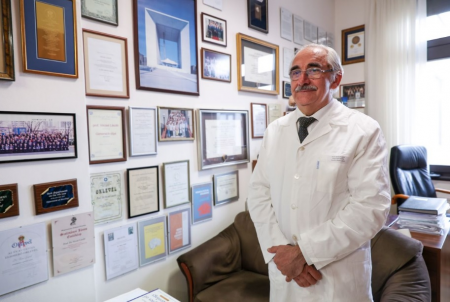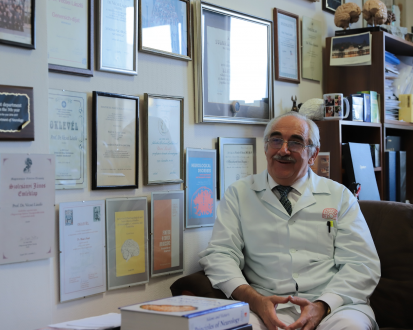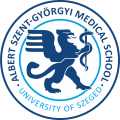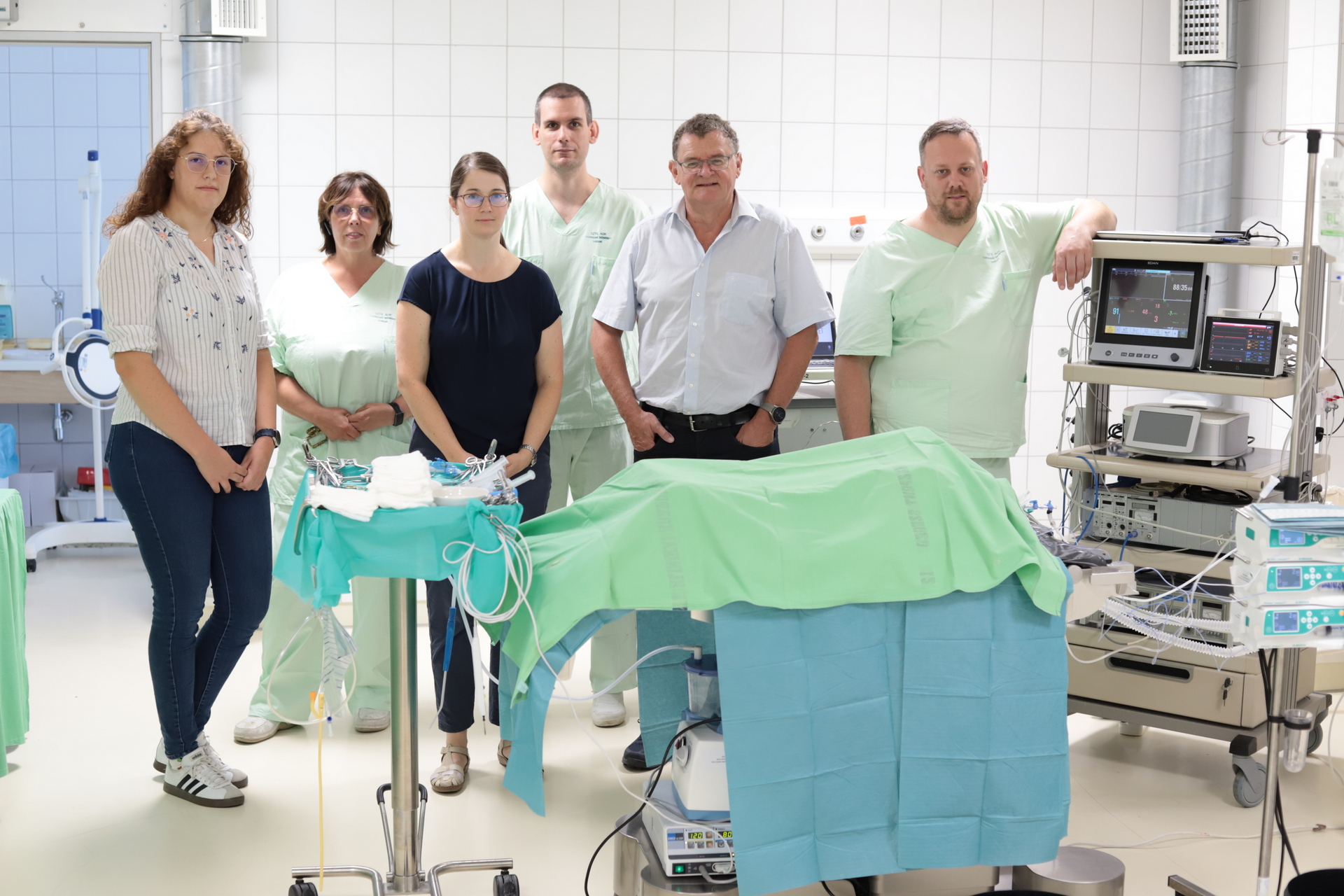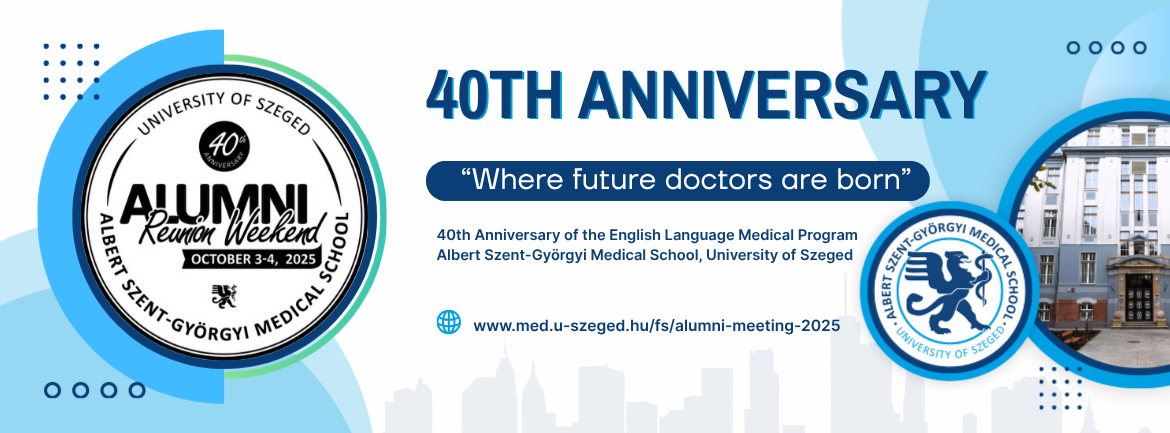- Neurology has made unprecedented progress in the past 40-45 years. In the past, our diagnostic options were very limited, so we had to perform a lot of lumbar punctures to establish a diagnosis. Today, this intervention is very rare. In Pécs, where I started my career as a neurologist, the department was also a stroke centre besides multiple sclerosis, but at that time we had neither CT nor MRI, only classic angiography. Today, with CT and MRI, we can set up very accurate diagnoses, and advanced imaging techniques help us to assess the extent of damage in the brain. Among other things, this has opened up the possibility for dissolving blood clots. In fortunate cases, the clot can be removed from the brain with a catheter guided through the vascular system. However, this requires very close cooperation between the neurologist, neuroradiologist, neurosurgeon, anaesthetist and other specialists, as well as with the ambulance service. When I started my career, we could only use steroids in the treatment of multiple sclerosis, but today we have more than 20 drugs to choose from, and the same is true for migraine, Parkinson's and other diseases.
- The real breakthrough that lies ahead is personalised medicine. Every patient is supposed to be given the therapeutic alternative that has proved to be the most effective for them. This is still largely the world of clinical research; however, we can already apply this approach to some diseases. An important basis for this therapeutic approach is a better understanding of the genomics, proteomics, lipidomics and various specific molecular biomarkers of patients. We work a lot on measuring kynurenine metabolites and certain neuropeptide markers. I recently gave a presentation on this very topic at a neurological conference titled molecular biomarkers and clinical follow-up of patients using sophisticated sensor systems in multiple sclerosis. We are also involved in large international clinical research programmes in Pharmacology. We work in close collaboration with the PET Centre at the University of Turku and Kyushu University in Japan. And together with my colleagues in Szeged - Professors József Toldi and Ferenc Fülöp - we have already patented several new kynurenic acid analogues in the hope of contributing to the development of new medications.
- Your research areas include headache and MS. How much has the treatment of these advanced over the years?
- We are witnessing a major shift in the perception of MS, because we have to slow down or even improve a neurological condition that is constantly deteriorating to a greater or lesser extent. In a good number of cases, the drugs that have already been developed can help to achieve this. We are also witnessing a major breakthrough in migraine. Most recently, 30 years ago, the introduction of triptans was an important advancement in drug therapy, and now the neutralisation of a peptide molecule that plays a major role in the development of migraine is an important treatment option. In fact, one of our research projects is related to the relationship between peripheral molecular biomarker profile, clinical symptomatology and drug efficacy.
- What do you recommend young people considering a future in medicine and neurology should do? How should they get started?
- I have stated several times that the incredible development of neurology ahead of us may only be followed by those who take an active part in the process: follow new discoveries, carry out research and publish valuable data. The spread of personalised medicine will bring about a whole new approach to medicine. I may not go to extremes by saying that we will be able to follow the background of neurological diseases almost to the molecular level. To do this, neurologists must have a very thorough understanding of molecules and genetics, they need to interpret the latest diagnostic and therapeutic data clearly and apply them accordingly. However, one important fact must not be forgotten: whatever technological advances await us, it will always be the patient at the forefront, with their suffering, questions, doubts and unbroken hope in recovery.
- What has motivated you throughout your career, a large part of which you have dedicated to research?
- I believe that research is a key part of universities’ mission. As a teacher, you can only impart up-to-date knowledge and a scientific perspective if you do active research yourself. And it is not only about exciting new findings, but also about the scientific view of the world that underlies teaching. And I can say the same about healing. When I look back at the progress made in neurology over the past 40 years, I have to say that it is amazing what an exciting future we have ahead of us. That's why I still say to students that everyone should get a PhD. Not that they can add another Dr to their name, but so that they can have the essential scientific perspective for the 40-45 years of active medicine ahead of them and keep up to date with the development of medicine for the benefit of their patients.

Do you prefer research, healing or teaching?
- In medicine, they are inseparable. Treating patients can mean a daily sense of achievement and positive feedback. Research is very inspiring and, if we are lucky, we can have a delightful sense of achievement in this field, too. And when teaching medical students, teachers can learn a lot from the students. I am happy about the much recognition I have received from my students, including being an honorary member of the Szeged Medical Students' Association.
- You have been involved in a number of science promotion tasks, what conclusions can you draw from this work?
Among my international assignments, I have been Vice President of the European Academy of Neurology, General Secretary of the Danube Symposium for Neurological Sciences and I am currently chairing a committee of the World Federation of Neurology. Recently, the database ’tudomanymetria.com’ was launched to evaluate the activity of researchers. International databases are also available (e.g. Web of Sciences, ResearchGate, Google Scholar and so on...). If we want to simplify this seemingly complex issue, the message is to publish as many very high-quality research results as possible, which will generate a strong international response (citation). Citation is also a major factor in the ranking of universities worldwide. It is also important to emphasise that if we have results that are directly applicable in practice, we should patent them.
- What about your future goals and plans?
- As I’ve mentioned earlier, personalised medicine is at the forefront of medicine. In the field of migraine treatment, we are conducting biomarker studies to see how clinical symptomatology and changes in molecular markers are related. In addition, with my colleagues, we are continuing our cooperation with the PET centre at the University of Turku, looking for correlations between cerebral events and biomarkers in peripheral blood in patients with multiple sclerosis. A very good working relationship has been established with Kyushu University (Fukuoka, Japan) over the past years. Transgenic mouse strains have been obtained and we are currently conducting very intensive neurological foci investigations, as well as behavioural and neurochemical studies. Within the framework of our Neuroscience Research Group at the Eötvös Loránd Research Network, we are conducting basic research on multiple sclerosis and migraine. The synthesis and patenting of kynurenic acid analogues continues unabated under the guidance of the Institute of Pharmaceutical Chemistry.
- And finally, what do you like to do in your spare time?
- My free time is very limited. I enjoy reading, including books on history, walking along the bank of Mures, listening to music and, of course, spending time with my wife, our children, grandchildren and friends.

